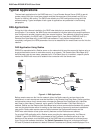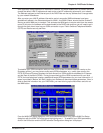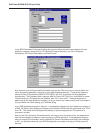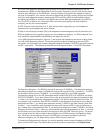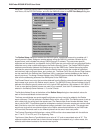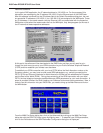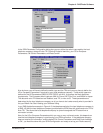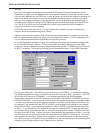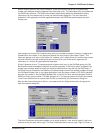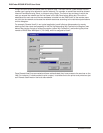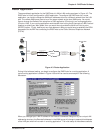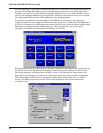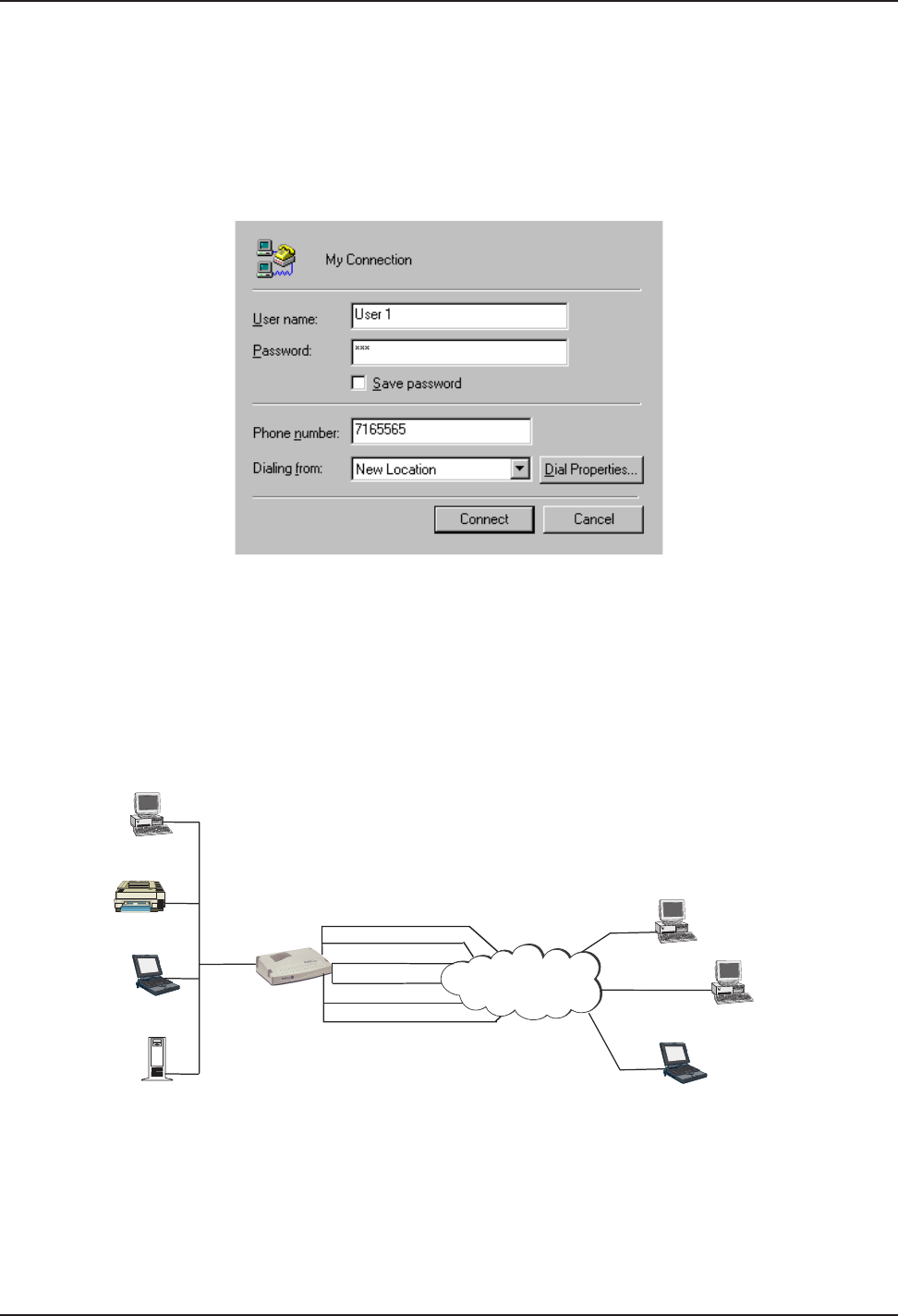
Chapter 4 - RASFinder Software
RF300E/RF310E 43
The Shell User Service Type Attribute has a value of “11” and also an associated value of ”6”.
After these new attributes are added to the Radius server and the user profile is established, a
remote user (in our typical RAS application with Radius, Remote User 1, for example) could call into
the RASFinder and identify themselves by their user name and password. Remote User 1, in our
typical application, can initiate a dialup session by entering their User name and password in the Dial-
Up Networking (My Connection) dialog box and the phone number of the WAN port on the
RASFinder that User 1 is going to be connected to. In this application, remote user 1 could dial 716-
5565 to connect to WAN port number one on the RASFinder.
At this point, Remote User 1 has access to the services on the LAN. For instance, if he/she wanted
to print a report, it could be sent to the printer and printed out as if Remote User 1 was on the local
area network.
RAS Application using Remote User Data Base
The initial software loading process would be the same as for the RAS application using Radius,
except that now instead of setting up Radius parameters, you will assemble a Remote User Data
Base. A typical RAS application using the Remote User Data Base is shown in Figure 4-2.
User 1
PSTN
LAN
Workstation
IP Address
192.168.2.5
Workstation
IP Address
192.168.2.3
Network Printer
IP Address
192.168.2.4
RASFinder
IP Address
192.168.2.10
User 3
User 2
BRI 1
BRI 3
BRI 2
Novell File
Server
192.168.2.11
192.168.2.12
192.168.2.13
192.168.2.14
192.168.2.15
192.168.2.16
716-5466 {0716546601}
716-5565 {0716556501}
Workstation
Workstation
Workstation
875-5000
881-3100
944-7064
Phone
Phone
Phone
IP Address
192.168.2.6
716-5566 {0716556601}
716-5567 {0716556701}
716-5467 {0716456701}
716-5468 {0716546801}
Figure 4-2. RAS Application using Remote User Data Base
During the software loading process when the Default Parameters dialog box is displayed, both IPX
and IP protocols are enabled and a default Ethernet IP address and (subnet) mask are displayed in
the IP LAN group. For this RAS application, you would disable the IPX protocol and then change the
default LAN IP address and mask to the unique IP addressing scheme for your network. The address
assigned to your RASFinder’s Ethernet port can be any address that is recognizable by your






